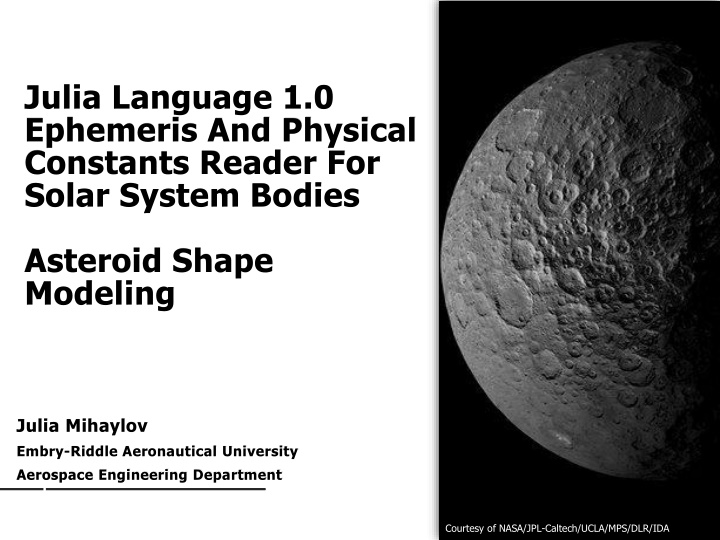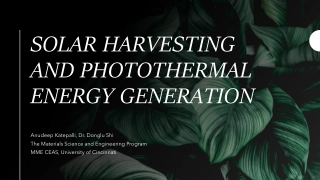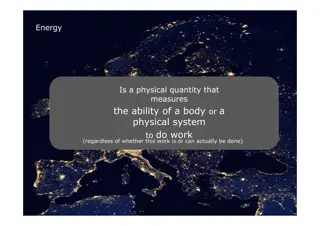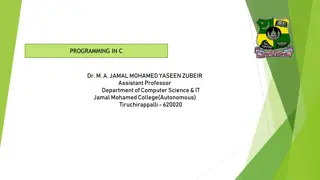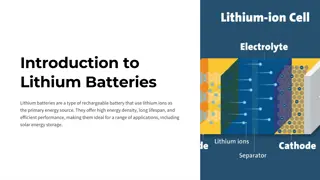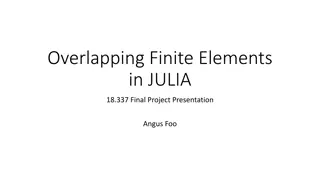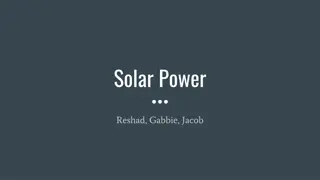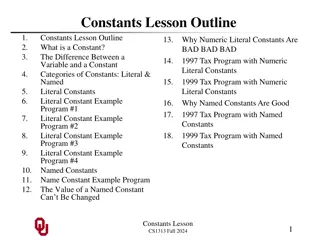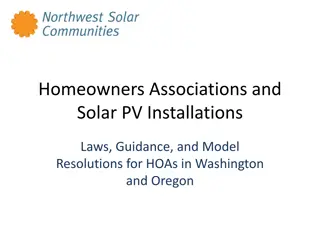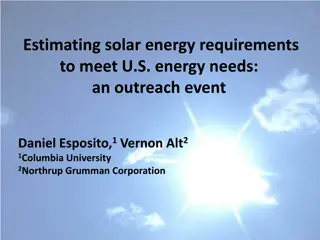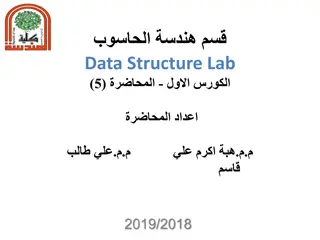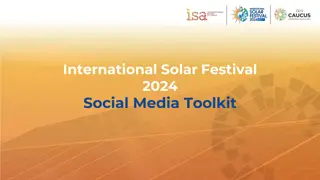Julia Language 1.0 Ephemeris and Physical Constants Reader for Solar System Bodies Asteroid Shape Modeling
Advancements in Julia Language with a focus on ephemeris and physical constants reader for solar system bodies, specifically asteroid shape modeling. This cutting-edge technology, developed by Julia Mihaylov from Embry-Riddle Aeronautical University, offers valuable insights into asteroid research, aiding future space missions and enhancing the available Julia Language library within NASA. Dive into the significance of retrieving updated ephemeris information and simplifying space exploration alongside a team of experts from NASA."
Download Presentation

Please find below an Image/Link to download the presentation.
The content on the website is provided AS IS for your information and personal use only. It may not be sold, licensed, or shared on other websites without obtaining consent from the author.If you encounter any issues during the download, it is possible that the publisher has removed the file from their server.
You are allowed to download the files provided on this website for personal or commercial use, subject to the condition that they are used lawfully. All files are the property of their respective owners.
The content on the website is provided AS IS for your information and personal use only. It may not be sold, licensed, or shared on other websites without obtaining consent from the author.
E N D
Presentation Transcript
Julia Language 1.0 Ephemeris And Physical Constants Reader For Solar System Bodies Asteroid Shape Modeling Julia Mihaylov Embry-Riddle Aeronautical University Aerospace Engineering Department Courtesy of NASA/JPL-Caltech/UCLA/MPS/DLR/IDA https://solarsystem.nasa.gov/images/galleries/p9_kbo_extras_orbits_2_1400.jpg
Acknowledgements Dr. Damon Landau Dr. Kaela Martin Renee Spear Tristan Minkoff Courtesy of NASA. Julia Mihaylov 2
Boddat Significance Retrieve updated ephemeris information Simplify and aid future space missions Improve available Julia Language library within NASA Courtesy of NASA. Julia Mihaylov 3
astermod 35 asteroid model properties available Utilization of Database of Asteroid Models from Inversion Techniques (DAMIT) Known asteroid ID, number, or name can be used Courtesy of NASA. Julia Mihaylov | Renee Spear 4
Applied Mathematics Light curve inversion method Shape models: polyhedrons with triangular surface facets Nonzero linear change of the rotation rate - YORP Courtesy of NASA. Julia Mihaylov | Renee Spear 5
astermod Parameters 35 total asteroid and model properties available Parameter Input Output lambda Ecliptic longitude of the spin axis direction (J2000.0, in degrees) Ecliptic latitude of the spin axis direction (J2000.0, in degrees) Sidereal rotation period (hours) beta period equiv_d Equivalent diameter (km) the diameter of a sphere that has the same volume as the shape model Julia Mihaylov | Renee Spear 6
How to use astermod model = astermod( aster , prop ) Courtesy of NASA. Julia Mihaylov | Renee Spear 7
astermod ? Example model = astermod( 109 , lambda ) Input 109 lambda Meaning Asteroid ID Ecliptic longitude of the spin axis direction (J2000.0, in degrees) Julia Mihaylov | Renee Spear 8
astermod ? Example Input: model = astermod( 109 , lambda ) Output: Dict{Any,Any} with 2 entries: 113 => 32 1806 => 36 Output 113 32 Meaning Asteroid model ID Ecliptic longitude of the spin axis direction of asteroid model ID 113 Asteroid model ID Ecliptic longitude of the spin axis direction of asteroid model ID 113 1806 36 Julia Mihaylov | Renee Spear 9
Questions? Julia Mihaylov mihayloj@my.erau.edu Courtesy of NASA. Julia Mihaylov | Renee Spear 10
References Bezanson, J., Edelman, A., Karpinski, S., and Shah, V. B., "Julia: A Fresh Approach to Numerical Computing," Soceity for Industrial and Applied Mathematics Review, Vol. 59, No. 1, 2015, pp. 65-98. Englander, J. A. and Conway, B. A., "Automated Solution of Low-Thrust Interplanetary Trajectory Problem," Journal of Guidance, Control, and Dynamics, Vol. 40, No. 1, 2017, pp. 15-27. Jiang, Y. Equilibrium Points and Orbits around Asteroid with the Full Gravitational Potential Caused by the 3D Irregular, Cornell University Library, 2018. Reimond, S. and Baur, O., "Spheroidal and ellipsoidal harmonic expansions of the gravitational potential of Small Solar System Bodies. Case study: 67P/Churyumov-Gerasimenko," Journal of Geophysical Research, Vol. 121, No. 3, 2016. Marson, R., Lagrasta, S., and Malvolti, F. "Computation of Precision Ephemeris coefficients in the GNSS message: Practical results from a proficient algorithm," IEEE AESS European Conference on Satellite Telecommunications, Rome, Italy, 2012. Martin, K., Mihaylov, J., Spear, R., and Landau, D. "Julia Language Ephemeris and Physical Constants Reader for Solar System Bodies," AIAA Space Flight Mechanics Meeting, Kissimmee, FL, 2018. Werner, R. and Scheeres, D., "Exterior gravitation of a polyhedron derived and compared with harmonic and mascon gravitation representations of asteroid 4769 Castalia," Celestial Mechanics and Dynamical Astronomy, Vol. 65, No. 3, pp. 313-344. Takahashi, Y. and Scheeres, D., "Small body surface gravity fields via spherical harmonic expansions," Celestial Mechanics and Dynamical Astronomy, Vol. 119, No. 2, 2014. Julia Mihaylov | Renee Spear 11
References (cont.) Kaasalainen, M. and Torppa, J., "Optimization methods for asteroid lightcurve inversion. I. Shape determination," Icarus, Vol. 153, 2001, p. 24. Kaasalainen, M., Torppa, J., and Muinonen, K., "Optimization Methods for Asteroid Lightcurve Inversion II. The Complete Inverse Problem," Icarus, Vol. 153, 2001, pp. 37-51. Durech, J. and Sidorin, V. Database of Asteroid Models from Inversion Techniques. http://astro.troja.mff.cuni.cz/projects/asteroids3D/web.php?page=project_main_page (accessed December 2018). Aoki, S., Kinoshita, H., Guinot, B., Kaplan, G. H., and McCarthy, D. D. . S. P. K., "The New Definition of Universal Time," Astronomy and Astrophysics, 1982, pp. 359-361. Chobotov, V. A. Orbital Mechanics, American Institute of Aeronautics and Astronautics, Reston, 2002. Paolicchi, P. and Kne evi , Z., "Footprints of the YORP effect in asteroid families," Icarus, Vol. 274, 2016, pp. 314- 326. Holdaway, R. "Satellite ephemeris prediction and orbit maneuverability by low thrust," 11th Electric Propulsion Conference, 1975. Stoneking, E. T., Neerav, S., and Dean, C. J. "Real-Time Visualization of Spacecraft Telemetry for the GLAST and LRO Missions," SpaceOps Conference, Huntsville, AL, 2010. Vasile, M., Ceriotti, M., Becerra, V. M., and Nasuto, S. J., "An Incremental Algorithm for the Optimization of Multiple Gravity Assist Trajectories," Computational Intelligence in Aerospace Sciences, 2014, pp. 745-779. Julia Mihaylov | Renee Spear 12
